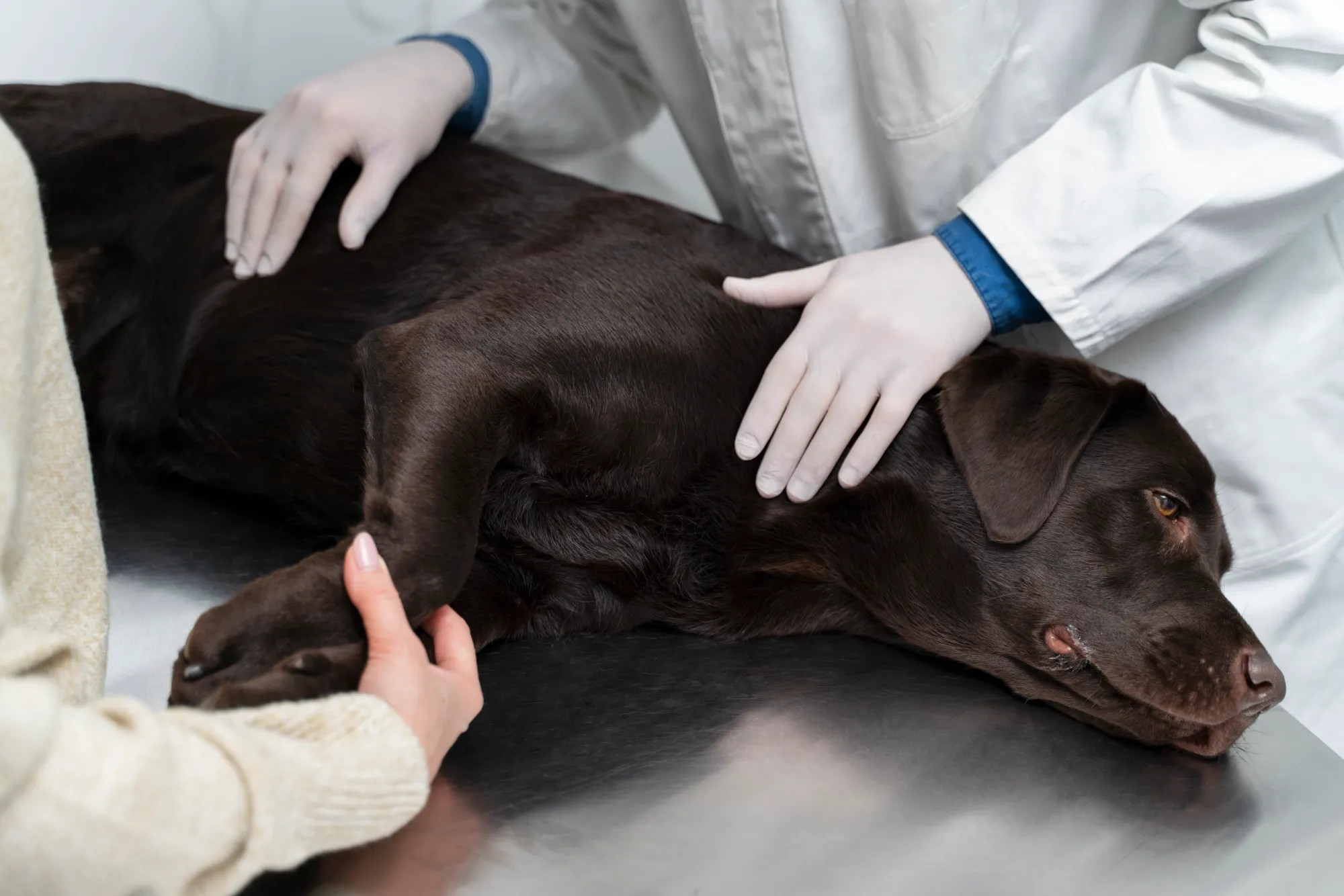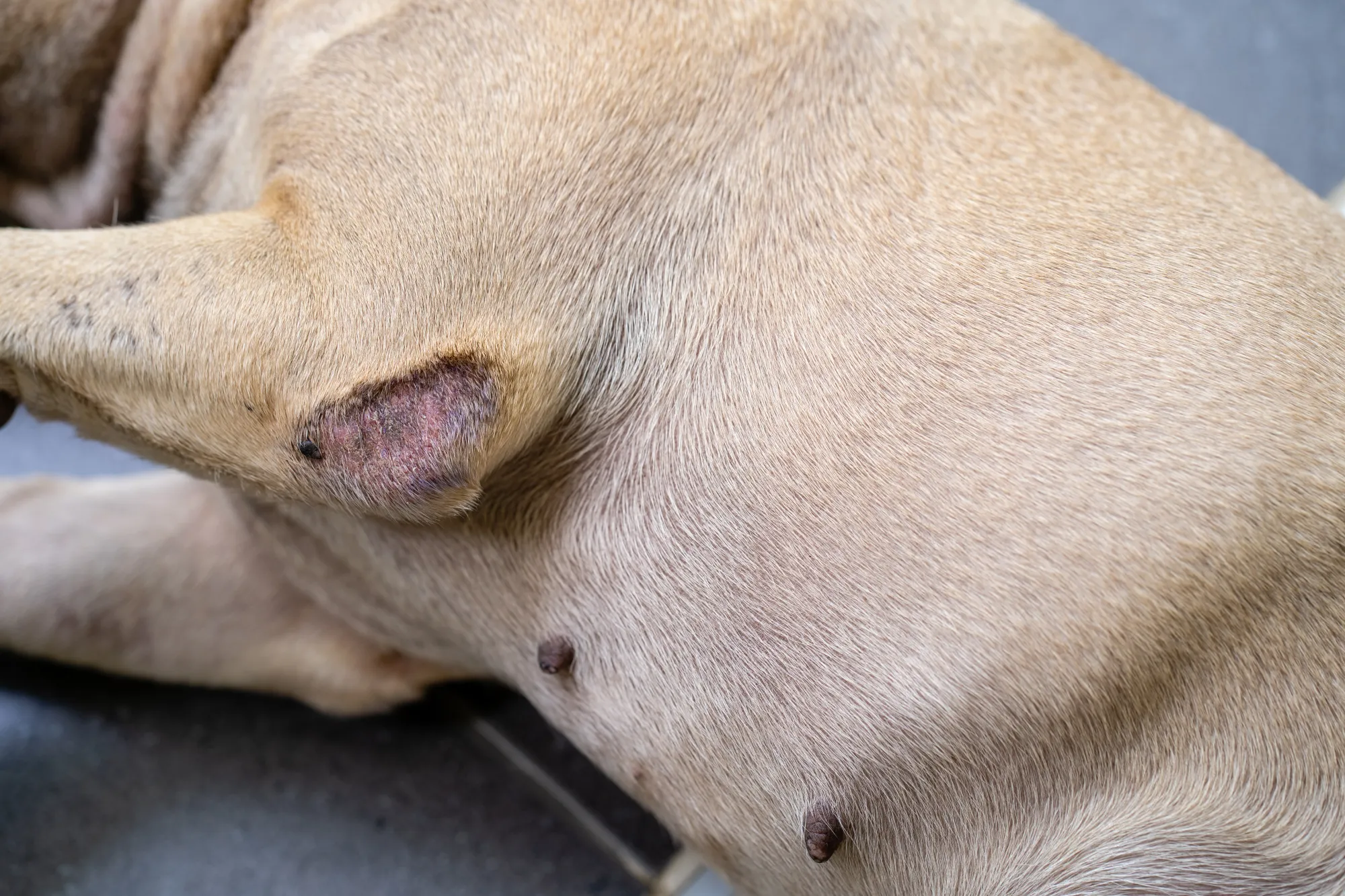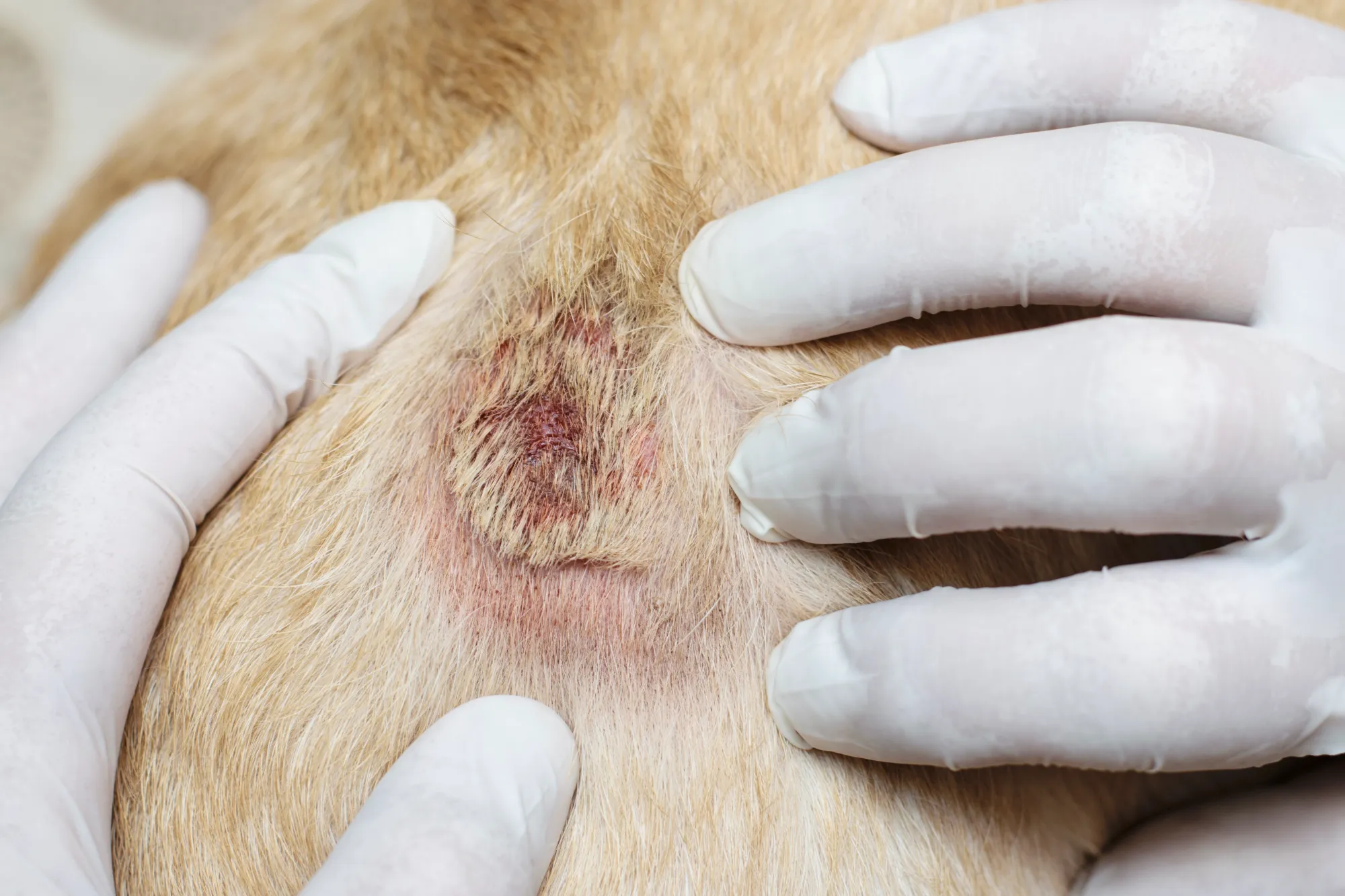Dogs are known for their playful and curious nature. They are loyal companions and often considered part of the family. However, when a dog has a red belly, it can cause concern for their owners.

A red belly in dogs can be caused by a variety of factors, including allergies, infections, and skin irritations. It is important for owners to identify the underlying cause of the redness in order to provide proper treatment. While some cases of red belly in dogs may require a visit to the veterinarian, there are also home remedies that can help alleviate the discomfort.
In this article, we will explore the various causes of red belly in dogs and provide tips for identifying and treating the issue. We will also discuss the importance of maintaining proper hygiene and nutrition to prevent future occurrences. By the end of this article, readers will have a better understanding of red belly in dogs and how to keep their furry friends healthy and comfortable.
Understanding Canine Skin Health
Skin health is an important aspect of a dog's overall well-being. Understanding the anatomy of dog skin and common skin problems in dogs can help pet owners identify and treat skin issues promptly.
Anatomy of Dog Skin
The skin is the largest organ of a dog's body, and it serves many functions, including protection from the environment, temperature regulation, and sensory perception. The skin consists of three layers: the epidermis, the dermis, and the subcutaneous tissue.
The epidermis is the outermost layer of the skin, and it provides a barrier against environmental toxins, bacteria, and other harmful substances. The dermis is the middle layer, and it contains blood vessels, nerves, hair follicles, and sweat glands. The subcutaneous tissue is the deepest layer, and it provides insulation and cushioning.
Common Skin Problems in Dogs
Dogs can experience a variety of skin problems, including rashes, itchiness, hair loss, irritation, redness, bumps, flaky skin, dry skin, dandruff, red spots, and red bumps. Some common skin conditions in dogs include:
- Allergies: Dogs can be allergic to a variety of substances, including food, pollen, and flea bites. Allergies can cause itching, redness, and inflammation of the skin.
- Infections: Bacterial, fungal, and yeast infections can cause skin problems in dogs. Symptoms may include redness, itching, and hair loss.
- Parasites: Fleas, ticks, and mites can all cause skin irritation and itching. In severe cases, parasites can also cause anemia and other health problems.
- Hormonal imbalances: Hormonal imbalances can cause a variety of skin problems in dogs, including hair loss, dry skin, and flaky skin.
To maintain good skin health in dogs, it is important to provide a healthy diet, regular grooming, and flea and tick prevention. If a dog is experiencing skin problems, it is important to consult a veterinarian for proper diagnosis and treatment.
Causes of Red Belly in Dogs

Redness on a dog's belly is a common symptom that can be caused by a variety of factors. Understanding the underlying causes of this condition can help pet owners address the problem and prevent it from recurring. Here are some of the most common causes of red belly in dogs:
Allergic Reactions
Allergies are a common cause of redness on a dog's belly. Dogs can be allergic to a variety of things, including food, pollen, dust, and insect bites. When a dog is exposed to an allergen, their immune system may overreact, causing inflammation and redness on the belly. Food allergies, in particular, can cause redness on the belly, as well as other symptoms like itching, vomiting, and diarrhea.
Parasitic Infestations
Parasites like mites, ticks, and fleas can also cause redness on a dog's belly. These parasites can irritate the skin and cause inflammation, leading to redness and itching. Demodex mites, in particular, are a common cause of redness on the belly in dogs. These mites are typically harmless, but in some cases, they can cause skin infections and other problems.
Infections and Inflammatory Conditions
Infections and inflammatory conditions like bacterial infections, fungal infections, and yeast infections can also cause redness on a dog's belly. These conditions can cause itching, inflammation, and redness, as well as other symptoms like discharge and foul odor. Ringworm, a fungal infection, is a common cause of redness on the belly in dogs.
Environmental Factors
Environmental factors like contact dermatitis and exposure to irritants can also cause redness on a dog's belly. Contact dermatitis occurs when a dog's skin comes into contact with an allergen or irritant, causing inflammation and redness. Irritants like fertilizer and poison ivy can also cause redness on the belly in dogs.
Genetic and Breed-Specific Issues
Some breeds of dogs are more prone to developing redness on the belly than others. Cocker spaniels, bulldogs, and golden retrievers, for example, are more likely to develop skin problems like allergies and infections. Genetic factors can also play a role in the development of skin conditions like hypothyroidism and Cushing's disease, which can cause redness on the belly in dogs.
By understanding the underlying causes of red belly in dogs, pet owners can take steps to prevent and treat this condition. If your dog is experiencing redness on their belly, it's important to consult with a veterinarian to determine the underlying cause and develop an appropriate treatment plan.
Diagnosing Red Belly in Dogs

Redness on a dog's belly can be a sign of an underlying health issue. It is important to diagnose the cause of the redness to determine the appropriate treatment. A veterinarian should be consulted if a dog's belly appears red or inflamed.
Physical Examination
During a physical examination, a veterinarian will look for signs of skin irritation, inflammation, or infection. They will examine the dog's belly and may ask about any other symptoms the dog is experiencing. The veterinarian may also perform a skin scraping to check for mites or other parasites.
Laboratory Tests
Blood tests may be performed to check for underlying health issues that could be causing the redness. Allergy testing may also be done to determine if the dog is allergic to a certain food or environmental factor. Skin samples may be taken to check for skin infections, yeast infections, or fungal infections.
In some cases, the cause of the redness may not be immediately apparent, and further testing may be required. It is important to follow the veterinarian's recommendations for testing and treatment to ensure the dog's health and well-being.
Treatment Options
Medical Treatments
If a dog has a red belly due to a medical condition, there are several treatment options available. For instance, if the dog has pyoderma, the veterinarian may prescribe antibiotics to help clear the infection. In the case of sarcoptic mange, the vet may recommend a topical medication or an antifungal medication to help treat the condition. Additionally, if the dog has a bacterial skin infection, the vet may prescribe antibiotics to help clear the infection.
Home Care and Remedies
In addition to medical treatments, there are also some home care and remedies that can help alleviate a dog's red belly. For instance, using medicated shampoos can help relieve itching and reduce inflammation. Hot spots can be treated with a dog shampoo that contains benzoyl peroxide or chlorhexidine. In cases of allergies in dogs, antihistamines can help reduce itching and scratching. It is important to note that before administering any medication or home remedy, pet owners should consult with a veterinarian to ensure that it is safe and effective for their dog's specific condition.
Overall, there are several treatment options available for dogs with a red belly. Whether it's through medical treatments or home care and remedies, pet owners can help alleviate their dog's discomfort and promote healing.
Prevention and Maintenance
Dietary Management
Maintaining a healthy diet is crucial to preventing a red belly in dogs. A well-balanced diet with proper nutrients can help boost the immune system and prevent allergies. It is important to avoid feeding dogs table scraps and low-quality commercial dog food that may contain allergens or preservatives.
Regular Grooming and Care
Regular grooming and care can help prevent skin irritation and infections. Dogs should be bathed regularly with a mild shampoo and conditioner to prevent dry skin and remove any allergens or irritants. It is also important to keep the dog's underarms and belly area clean and dry to prevent moisture buildup.
Environmental Control
Environmental factors can play a significant role in causing a red belly in dogs. In humid weather, dogs are more prone to developing a rash or infection. It is important to keep the dog's environment clean and dry to prevent the growth of bacteria and fungi. Flea allergy dermatitis can also cause a red belly, so it is important to keep the dog's environment flea-free.
By following these preventative measures, owners can help maintain a healthy and happy dog. If a dog does develop a red belly, it is important to seek veterinary care to properly diagnose and treat the underlying cause.
Frequently Asked Questions
- What are common causes of rashes on a dog's belly and inner thighs?
- There are several reasons why a dog may develop a rash on their belly or inner thighs. Common causes include allergies to food or environmental factors, parasites such as fleas or mites, bacterial or fungal infections, and hormonal imbalances. It is important to identify the underlying cause of the rash in order to properly treat it.
- How can you identify different types of skin diseases in dogs?
- Different skin diseases in dogs can present with various symptoms such as redness, itching, flaking, or scabbing. Some common skin diseases in dogs include atopic dermatitis, hot spots, and ringworm. A veterinarian can perform a skin scraping or biopsy to accurately diagnose the condition and recommend appropriate treatment.
- What home remedies are effective for treating a dog's rash on the belly?
- While there are various home remedies that may provide relief for a dog's rash on the belly, it is important to consult with a veterinarian before trying any treatments. Some effective home remedies may include oatmeal baths, coconut oil, and aloe vera. However, it is important to note that some home remedies may worsen the condition or cause further irritation.
- How should a dog with a red belly be treated by a veterinarian?
- If a dog has a red belly, it is important to schedule an appointment with a veterinarian as soon as possible. The veterinarian may perform a physical exam and diagnostic tests to determine the underlying cause of the redness. Treatment may include medication, topical creams, or changes in diet or environment.
- What might be the implication of a dog's belly turning red without other symptoms?
- A red belly in a dog may be a sign of an underlying issue such as an allergic reaction or infection. It is important to monitor the dog for any other symptoms and schedule an appointment with a veterinarian to determine the cause of the redness.
- Are there any specific conditions indicated by red skin on a dog?
- Red skin on a dog may indicate a variety of conditions such as allergies, infections, or hormonal imbalances. It is important to consult with a veterinarian to accurately diagnose and treat the underlying condition.




